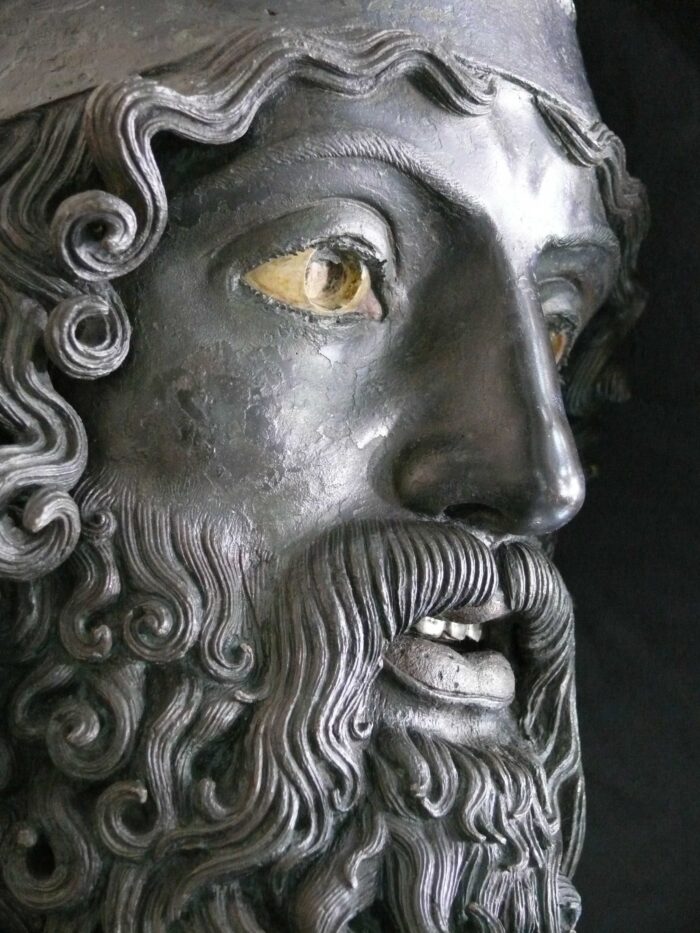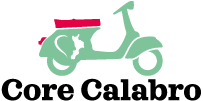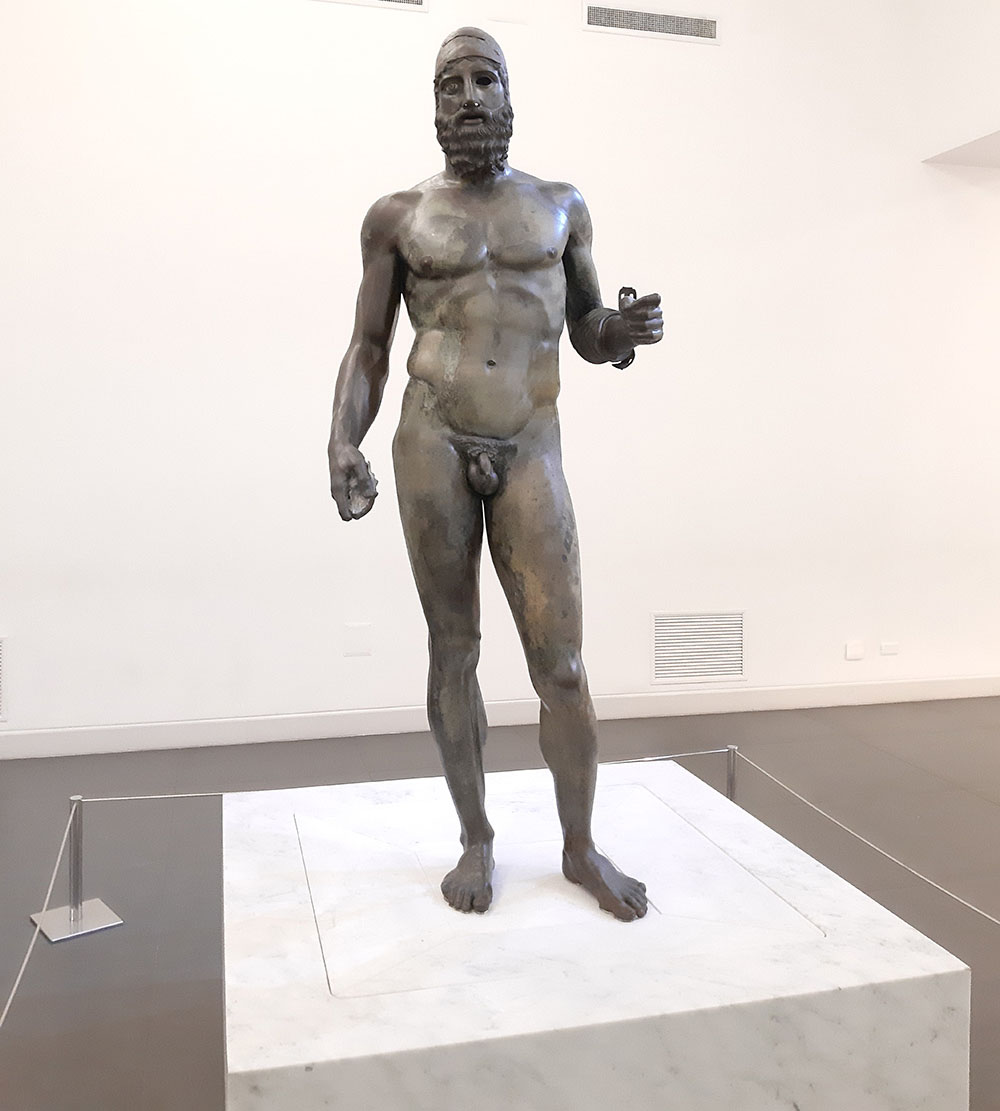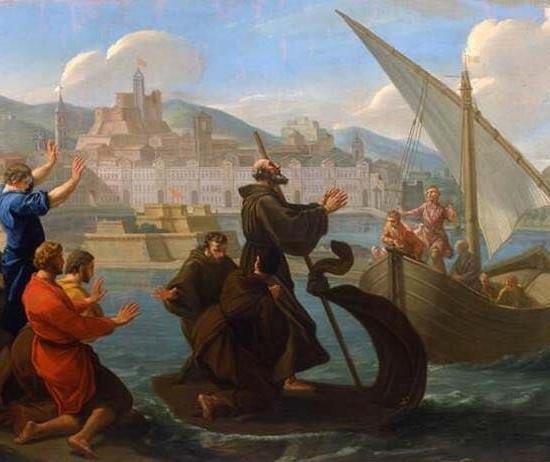Bronzes Anatomy
The two famous statues found in the Ionian Sea are a limpid lesson about anatomy, chemistry, an amazing journey into the human body. A museum tour guide becomes an experience of discovering the muscles and the superlative facial features highlighted by the artist.
They have become, today, the most famous inanimate couple in the world.
Many scholars have told the stories, the plots, the anecdotes, the background relating to their discovery in the Ionian Sea (1972).
They wrote essays on the investigations made to understand where they were located 2500 years ago and who they represented.
Who are the two robust, statuary, Riace Bronzes?
Core Calabro will try to update you on all the reconstructions released by scholars, offering you a serial novel that will make you passionate about this wonderful story of “heroes” who came from the sea.
Their identification is probably linked to the myth of the Seven against Thebes (the artist Aeschylus made a transposition into a tragedy in the 5th century BC). We’re talking about the ancient epic poem belonging to the Theban Cycle: the war between the two brothers Polynices and Eteocles (they were the sons of Oedipus and Jocasta), who were fighting for the possession of Thebes.
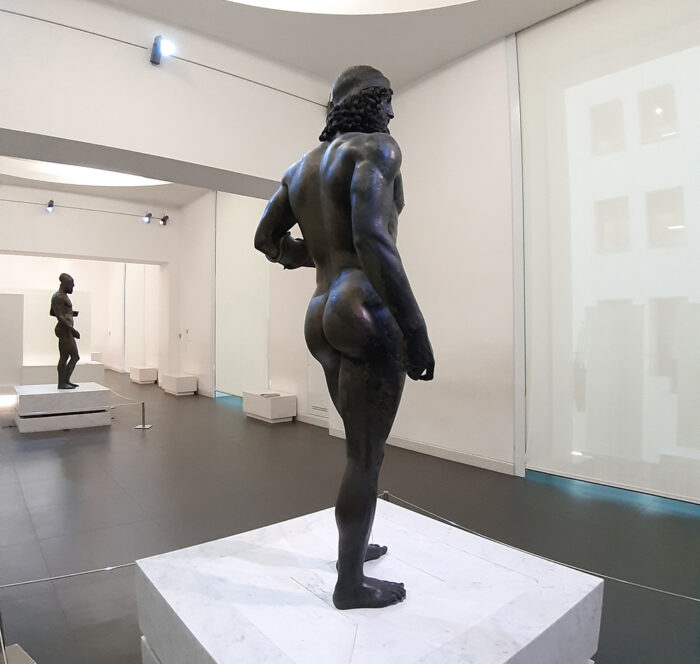
We want to tell you about our first meeting, when we met the two “warriors”. It wasn’t love at first sight, but it certainly caused a great emotional impact on us.
It was during a fun school trip, when you are a casual teenager and you are not aware of the immense significance of a monument of such value. Greatness is there, close to you, but you don’t feel it.
😳 We remember the reverential silence inside the Reggio archeological museum when we crossed the threshold of the room that housed them. A little bit of thrilling, the first bronze giant is staring at you…
In fact we also remember 😨 a certain awe in meeting that “menacing” look from Bronze A, the one that suddenly turns to the right and seems to want to scream something. It seems that he is about to insult, barely holds back his anger, while his “colleague” is calm and does not have the same sense of belligerence.
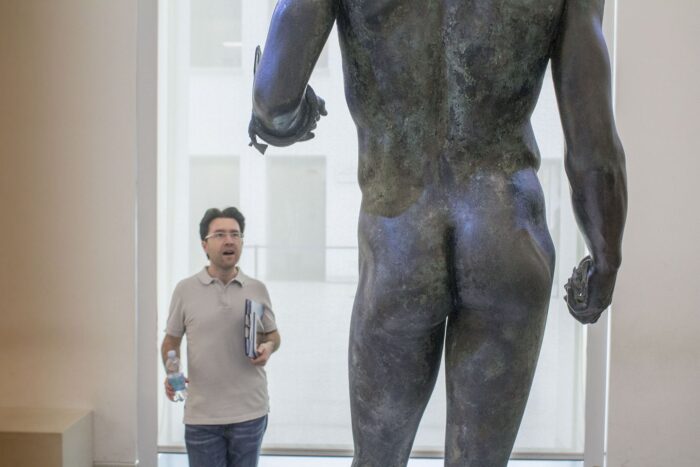
Well, we can say that the first meeting with the Bronzes was a good lesson in Anatomy!
The Greek master who molded the clay, the wax and perfected those figures, with patience, before and after casting the molten bronze, he was certainly a great specialist of the human body sculpture. Muscles, bones, veins.
As Paolo Enrico Arias said (he’s one of the greatest archaeologists of the twentieth century), when you look at the body of Bronze A, you are shocked by the rendering of the sternocleidomastoid muscle – which contracts on the right, while remaining stretched on the left, just like when we whirl our heads. Do you see it?
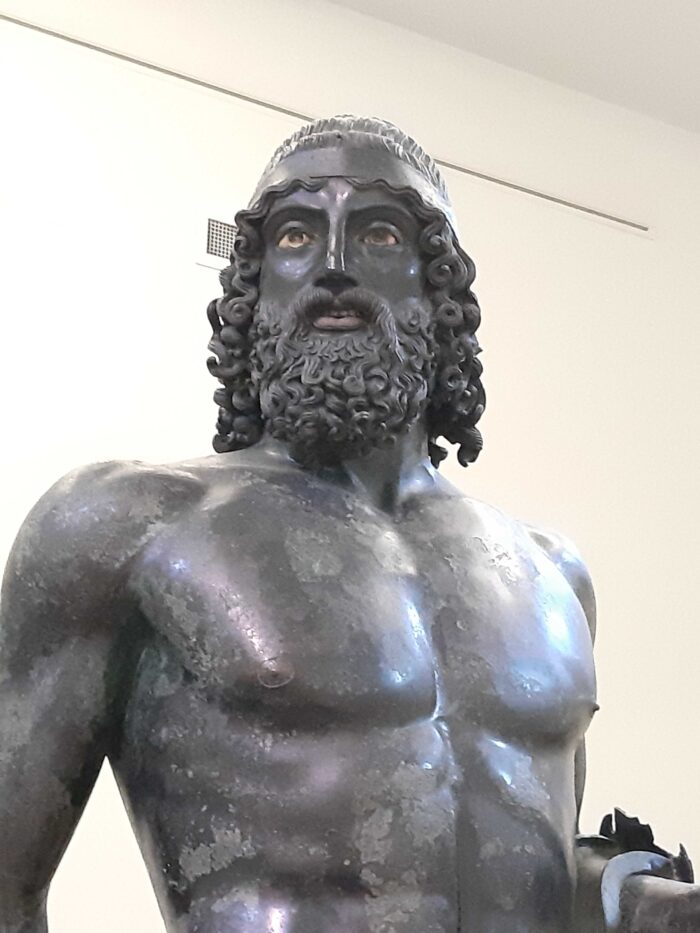
Under the beard, under the chin, it is V-shaped, in the center of the neck. And what about the vertical line of the sternum, which flawlessly ends in a point called the xiphoid process (when the pectoral muscles end, a little further down, in the center you can see a sort of dimple). From here, you see the linea alba that goes up to the navel, symmetrically highlighting the partitions of the abdomen, the “turtle” that athletes never fail to exhibit. You also see the intercostal muscles.
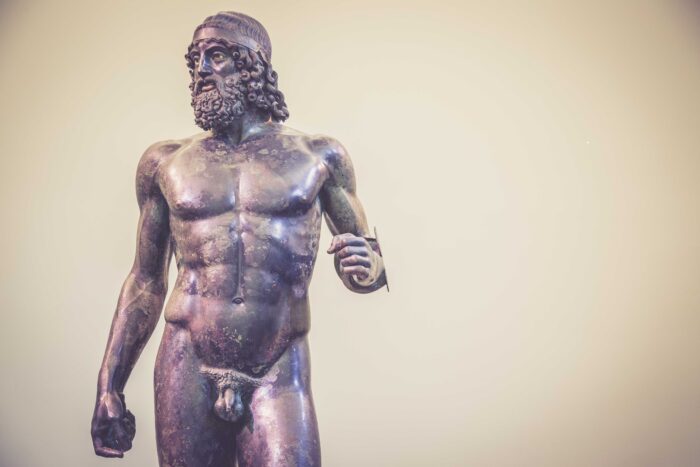
Phenomenal triceps and biceps stand out on the arms, as the brachioradialis muscle in the forearm. You notice the cephalic vein, and the cubital one that should be attached to the basilica. Ehm, we stop here because we are not in a university classroom, underlining however how the artist was also a maniac of the face, of the head… Lips made of almost pure copper, like the nipples, eyes created using calcite, the eyelashes were made scrupulously fraying a copper foil. Bronze A teeth were covered with a silver plate, the Riace Bronzes even have the lacrimal caruncle made of a kind of pink stone – professor Daniele Castrizio said (University of Messina), something that is impressive because it is very rare to find.
